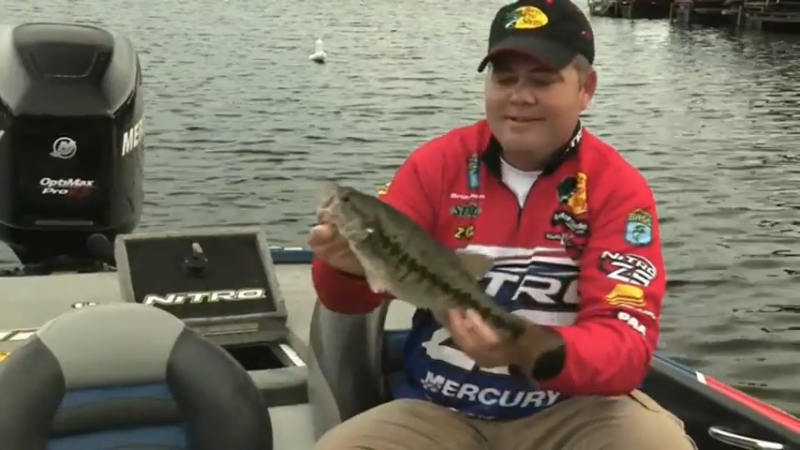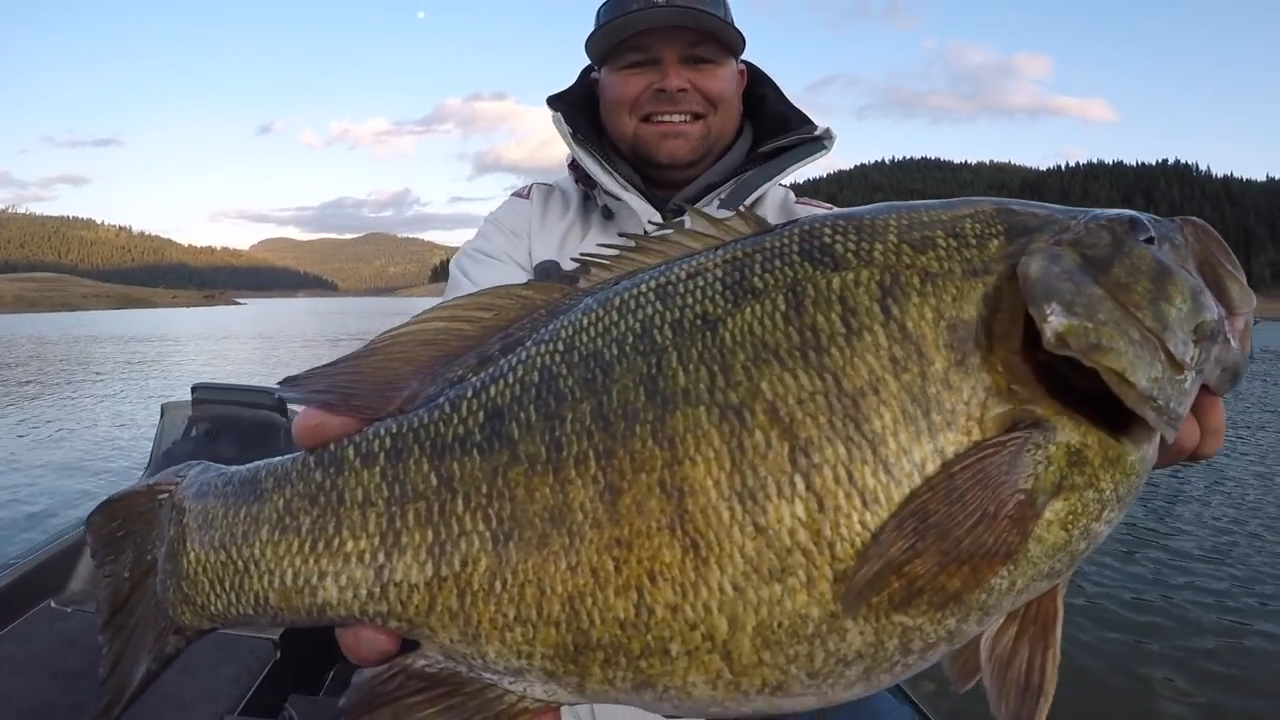There are various differences between rock bass and smallmouth bass that make identifying them a lot easier once you know what to look for. We’ll walk through their physical characteristics, behaviors, and even their preferred habitats.
Let’s be clear, there’s no need for any fancy fish expertise here—just some simple things to pay attention to next time you’re out fishing.
Key Differences
| Characteristic | Rock Bass | Smallmouth Bass |
| Color | Olive-green to brown with dark blotches, often on its sides | Varies from bronze to dark brown, with vertical stripes along the sides |
| Size | Smaller, typically 6–10 inches, with some reaching up to 12 inches | Larger, commonly 12–20 inches, with some growing beyond that |
| Eyes | Red or amber in color, which really stands out | Usually golden or brownish—definitely not as striking as the rock bass |
| Shape | Chunkier, rounder body with a short, stocky profile | Streamlined and elongated, built for speed and stronger currents |
| Habitat | Found in slower-moving waters, including lakes and streams with cover | Prefers clear, fast-moving waters with rocky bottoms, like rivers and lakes |
Let’s Talk Appearance
Body Color and Markings
Rock bass are often confused with smallmouths because they can share similar earthy tones. However, rock bass typically lean more towards an olive-green hue. They often have dark, irregular blotches scattered across their sides, making them look almost camouflaged.
The texture of the blotches can seem a little messy, but it fits right in with their smaller, chunkier build.
Smallmouth bass, on the other hand, are known for their vertical stripes. Picture a bronze or brownish fish with thin, tiger-like stripes running down its sides. Their color can change slightly depending on their environment, but those vertical stripes tend to stay pretty consistent.
If the fish you’re holding has darker, broken-up patches, you’re likely looking at a rock bass. If the fish seems more streamlined and has those signature vertical bars, you’ve likely got a smallmouth.
Eye Color

This is one of the easiest ways to tell the two apart. Rock bass have unmistakable red or amber eyes. It’s one of those features that pops right out at you when you’re looking at them. Once you see that eye color, it’s pretty hard to miss. Smallmouth bass, however, tend to have eyes that range from golden to brown. Their eyes are definitely less striking and blend in more with their body’s coloring.
Body Shape and Size
If you’re struggling with the color or markings, body shape can be another dead giveaway. Rock bass have a chunkier, rounder body. They often look a little “stout,” if you know what I mean.
Smallmouth bass, in contrast, have that sleek, torpedo-like shape. They’re designed for fast, flowing waters, so their bodies are more elongated and built for speed. They often look like they’re ready to swim off at a moment’s notice.
And size-wise? Well, rock bass tend to be on the smaller side. Most of the time, you’ll catch them in the 6–10 inch range. If you land something larger than 12 inches, you’ve got a pretty big rock bass.
Smallmouths, though, can grow to a pretty impressive size. Most are around 12–20 inches, but it’s not unusual to find them even bigger, especially in lakes where they can grow without much competition.
Habitat Preferences
Rock bass love slower, more sheltered waters. You’ll often find them hanging out near structures, like submerged logs or rock piles, in lakes and streams. If the water’s a little murky and there’s plenty of cover, that’s prime rock bass territory. They’re also fond of shady areas where they can easily hide and ambush prey.
Smallmouth bass, on the other hand, are fans of faster-moving, clearer waters. They thrive in rocky rivers with strong currents or on the edges of lakes with rocky or gravelly bottoms. If you’re fishing in a spot where the water is clear and moving swiftly, especially around rocks, you’re likely targeting smallmouth bass.
They tend to stick to areas where they can use their speed and agility to chase down prey.
What Do They Like to Eat?
Both species are aggressive feeders, but they have some preferences that reflect their environments.
- Rock Bass: These little guys are opportunistic feeders. They’ll eat pretty much anything they can find, from crayfish to smaller fish, and even insects. Since they live in slower waters, they don’t rely on speed but rather their ambush tactics. If you see them near the bottom or around the cover, they’re likely hunting.
- Smallmouth Bass: Smallmouths are more active hunters. Their diet often consists of minnows, crayfish, and various aquatic insects. Since they live in faster-moving waters, they tend to chase down their meals with bursts of speed. You’ll often find them hunting near rocks or in deeper parts of the river where they can use the current to their advantage.
Tackle Tips
If you’re out fishing, knowing what kind of tackle to use can also help you determine what species you’re more likely to catch.
Targeting Rock Bass
Rock bass aren’t picky, so a light to medium spinning rod and reel will work perfectly. They’re typically caught on smaller lures like jigs, spinners, or even live bait such as worms or minnows. Since they tend to hang out near the bottom, using a slower retrieve and targeting structures is a good bet.
Targeting Smallmouth Bass
For smallmouth bass, you’ll want a slightly heavier rod, especially if you’re fishing in rivers with strong currents. Medium to heavy spinning gear works well. Smallmouths are attracted to a wide variety of baits, but crankbaits, plastic worms, and spinnerbaits are particularly effective.
Wrapping It Up
Rock bass and smallmouth bass might seem similar at first glance, but with a little attention to detail, it’s pretty easy to tell them apart. Look at their eyes, body shape, color, and size—those are the key factors. Plus, knowing their preferred habitats can help you figure out what you’re most likely dealing with, depending on where you’re fishing.

